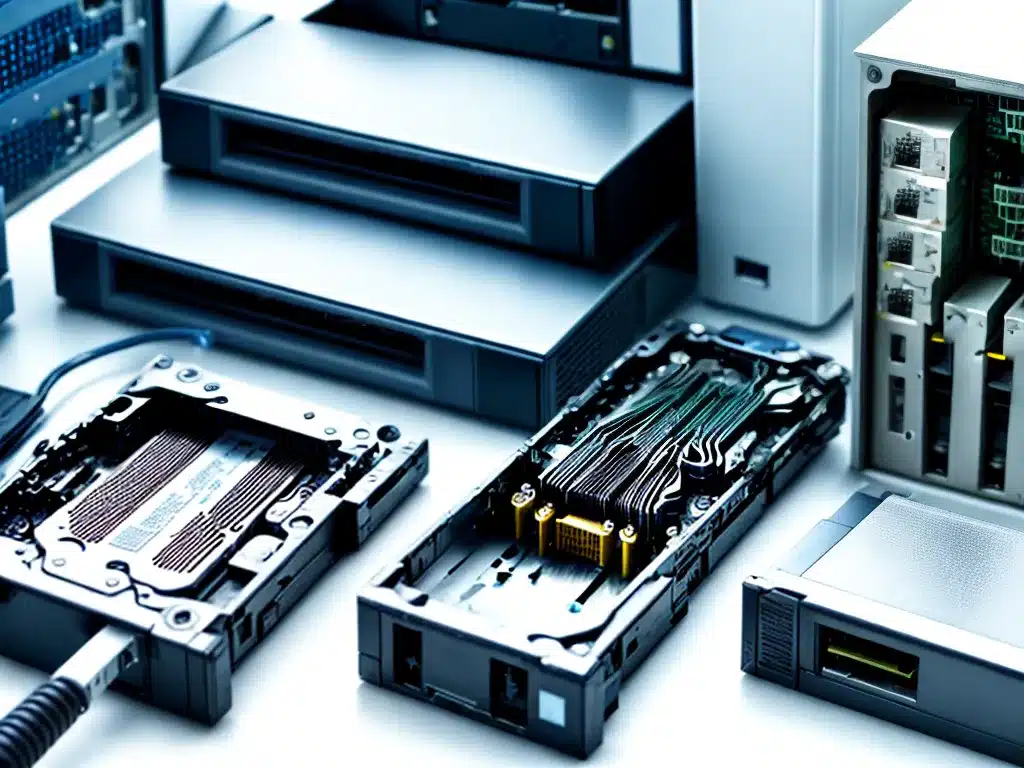Introduction
Network attached storage (NAS) devices provide a convenient way to store and share files across a network. However, like any storage device, NAS devices can fail or become corrupted, resulting in data loss. When this happens, it’s important to know your options for recovering lost data from a NAS device. In this article, I will provide an in-depth look at the various data recovery options available for NAS devices.
Causes of Data Loss on NAS Devices
Before exploring recovery options, it’s helpful to understand what causes data loss on NAS devices in the first place. Some common causes include:
Hardware Failures
-
Hard drive failures: Hard drives can fail due to mechanical or electronic issues. This causes inaccessible data.
-
Power surges: Power fluctuations can damage NAS components like the motherboard, CPU, or RAM.
-
Overheating: Insufficient cooling can cause NAS hardware to overheat and fail.
Logical Errors
-
Accidental deletion: Users may accidentally delete files or folders.
-
File system corruption: The file system can become corrupted, making data inaccessible.
-
Malware or ransomware: Malicious software can attack, encrypt, or delete data.
-
Improper device shutdown: Forcing a NAS offline without properly unmounting file systems can cause corruption.
Disasters
-
Theft: Physical theft of the NAS eliminates access to data.
-
Fire, flood, or natural disaster: Environmental catastrophes can destroy the NAS device.
DIY Data Recovery Options
If you experience data loss on a NAS device, there are some do-it-yourself (DIY) recovery options to try before resorting to professional data recovery services.
Restore from Backups
The best way to recover lost data is to restore it from a backup. Ideally, you should maintain at least one local backup and one off-site backup. If you have a current backup, you can restore missing files and folders. However, this only works if you have a backup that is recent enough.
Check RAID Configuration
Many NAS devices use RAID storage configurations to provide redundancy. If you lose a single drive in a RAID 1, 5, or 10 array, you may be able to rebuild the array and recover data. You will need to replace the failed drive and allow the RAID to rebuild. This process salvages data from the remaining healthy drives.
Export Data from Cloud Storage
If you use your NAS device to sync or backup data to a cloud service like Dropbox or Google Drive, check your cloud storage for copies of missing files. You can export or download cloud-hosted data to another device as a recovery option.
Scan Storage Devices
If you remove the drives from a damaged NAS device, you can try connecting them to another system and scanning them for recoverable data using recovery software. This allows you to access the drives directly rather than over the network.
File Carving
File carving uses data recovery software to scan drives and extract files based on file headers, footers, and directory entries. This technique can recover files even when file system corruption prevents normal access. However, recovering the original folder structure is difficult.
Professional Data Recovery Services
For challenging cases of severe NAS data loss, you may need to enlist professional data recovery services. Reputable data recovery companies possess extensive resources, cleanroom facilities, proprietary recovery tools, and skilled experts. They can often recover data when DIY options fail.
Logical Recovery
Logical recovery involves repairing corrupted file systems and directories. Experts use specialized software to rebuild metadata tables, directories, and allocation maps to make data readable again. Logical recovery is used when the drives are mechanically sound.
Physical Recovery
Physical recovery is needed when drives have physical issues like failed read/write heads, motor seizures, or degraded platters. Damaged components in the hard drive are repaired or replaced in a sterile cleanroom. Data is then extracted using specialized tools.
Complete File System Recovery
Professional services can recover full file systems with folder structures intact. They achieve this by combining physical and logical recovery techniques based on the unique situation. Complete recovery of original file and folder hierarchy provides the most user-friendly result.
Piecewise Data Recovery
When complete recovery is not possible, experts can often recover parts of files. This piecewise data recovery retrieves fragments of files. Although partial, it can reconstruct important data. The recovered chunks of files, though incomplete, might have enough meaningful information.
Choosing the Right NAS Data Recovery Service
If you decide on professional NAS data recovery, choose your provider carefully:
-
Reputation: Select an established company with a proven track record. Check reviews and complaints.
-
Experience: Seek out experts who thoroughly understand NAS systems and RAID configurations.
-
Security: The company should offer a secure chain of custody and destroy drives after recovery.
-
Cleanroom: A certified ISO Class 5 cleanroom ensures safe and effective physical data recovery.
-
Cost: Get quotes from multiple vendors. However, don’t choose based on price alone.
-
Guarantee: Select a company that provides a recovery guarantee or no-recovery, no-charge policy.
Summary
Suffering data loss on a NAS can disrupt personal and business operations. Quickly attempting DIY recovery techniques like restoring from backups provides the best chance for a successful outcome. For challenging recovery scenarios, established data recovery companies have the expertise, equipment, and controlled environments to recover data from storage devices that suffered physical damage. With proper preparation and planning, you can get back lost files – avoiding downtime and expensive disruption.













